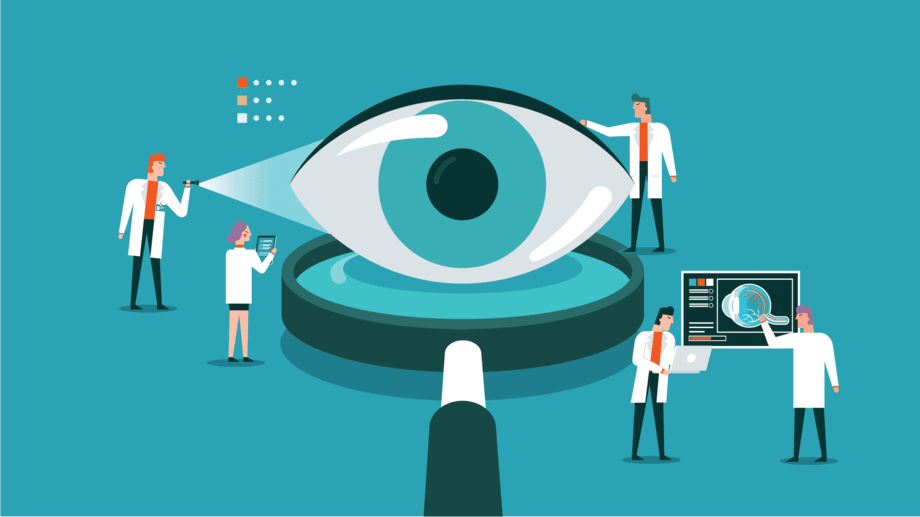Why Regular Screenings Are Vital for Glaucoma Detection

Glaucoma is a prevalent ocular disorder that poses a significant burden on individuals and healthcare systems worldwide. Early detection of glaucoma is critical in order to prevent irreversible vision loss and maintain visual function.
This article aims to highlight the importance of regular screenings for glaucoma detection by examining the prevalence of the condition, understanding the associated risk factors, discussing different types of glaucoma tests, and emphasizing the benefits of frequent screenings.
By adhering to these guidelines, it is hoped that individuals will be better informed about the necessity of regular glaucoma screenings.
Key Takeaways
- Glaucoma is a prevalent ocular disorder worldwide and a leading cause of irreversible blindness.
- Regular screenings are essential to detect glaucoma early and reduce its burden.
- Identifying risk factors such as age, family history, race, and high intraocular pressure helps determine the appropriate frequency and intensity of screenings.
- Early detection of glaucoma through screenings significantly improves prognosis and quality of life by preventing irreversible vision loss and preserving visual function.
The Prevalence of Glaucoma
The prevalence of glaucoma in the general population has been found to be significant, indicating the need for regular screenings to detect and manage this condition effectively.
Glaucoma is a leading cause of irreversible blindness worldwide, affecting millions of individuals. Prevalence data indicates that the global impact of glaucoma is substantial, with an estimated 76 million people affected by the year 2020.
The prevalence varies across different regions and populations, with higher rates reported in older individuals and certain ethnic groups. The burden of glaucoma is expected to increase in the future due to an aging population and changing demographics.
Regular screenings are essential to detect glaucoma early and initiate appropriate treatment to prevent vision loss. These screenings play a crucial role in reducing the global burden of glaucoma and improving the overall quality of life for affected individuals.
Understanding Glaucoma Risk Factors
Understanding the risk factors associated with glaucoma is important for early detection and management. Glaucoma is a complex eye condition that can lead to irreversible vision loss if not detected and managed in a timely manner.
Risk factors for glaucoma include age, family history, race, high intraocular pressure, thin corneas, and certain medical conditions like diabetes and hypertension. Age is a significant risk factor, with the prevalence of glaucoma increasing with advancing age.
Family history of glaucoma also plays an important role, as individuals with a first-degree relative affected by glaucoma have an increased risk of developing the condition themselves.
Race is another significant risk factor, with individuals of African, Hispanic, and Asian descent being at higher risk.
Identifying these risk factors through comprehensive risk assessment can help healthcare professionals determine the appropriate frequency and intensity of glaucoma screenings for individuals at higher risk, ensuring early detection and timely management.
Importance of Early Glaucoma Detection
Early detection of glaucoma plays a crucial role in preventing irreversible vision loss and ensuring timely management of the condition. Regular screenings are vital for detecting glaucoma at its early stages when treatment can be most effective. The benefits of early detection include preserving visual function, preventing further damage to the optic nerve, and minimizing the need for invasive treatment options. The frequency of glaucoma screenings depends on various factors such as age, family history, and other risk factors. The table below summarizes the recommended glaucoma screening frequency based on age and risk factors:
| Age Group | No Risk Factors | Moderate Risk Factors | High Risk Factors |
|---|---|---|---|
| Under 40 | Every 2-4 years | Every 1-2 years | Annually |
| 40-54 | Every 1-3 years | Every 1-2 years | Annually |
| 55-64 | Every 1-2 years | Annually | Annually |
| 65 and above | Annually | Annually | Annually |
Early detection through regular screenings can significantly improve the prognosis and quality of life for individuals with glaucoma.
Different Types of Glaucoma Tests
Different types of tests are available to diagnose and monitor glaucoma, including tonometry, ophthalmoscopy, and visual field testing. These tests are essential for early detection and management of glaucoma, a progressive eye disease that can lead to irreversible vision loss if left untreated.
- Tonometry: This test measures the pressure inside the eye, known as intraocular pressure (IOP). Elevated IOP is a major risk factor for glaucoma, and tonometry helps in detecting abnormal eye pressure.
- Ophthalmoscopy: It involves examining the optic nerve at the back of the eye to identify any signs of damage or abnormalities. The optic nerve is often affected in glaucoma, and ophthalmoscopy aids in its evaluation.
- Visual field testing: This assesses the peripheral vision or the ability to see objects in the side or periphery of the visual field. Glaucoma typically causes gradual loss of peripheral vision, and visual field testing is crucial for monitoring disease progression and assessing treatment effectiveness.
Frequency of Glaucoma Screenings
This discussion will focus on the optimal screening time for glaucoma, the detection benefits for patients, and the importance of early detection.
Identifying the most suitable timing for glaucoma screenings is crucial in order to maximize the chances of detecting the disease at its earliest stages.
Additionally, understanding the benefits that come with timely detection can help healthcare providers emphasize the importance of regular screenings to their patients.
Ultimately, early detection plays a pivotal role in ensuring appropriate management and potentially preventing vision loss in individuals with glaucoma.
Optimal Screening Time
The optimal time for conducting screenings to detect glaucoma remains a topic of ongoing research and debate in the field. Identifying the best age to initiate screenings and determining the recommended frequency are essential considerations for healthcare professionals.
Several factors influence the determination of the best age for glaucoma screenings, including:
- Family history: Individuals with a family history of glaucoma may require earlier screenings, as they have a higher risk.
- Ethnicity: Certain ethnic groups, such as African Americans and Hispanics, are at a higher risk of developing glaucoma at an earlier age.
- Presence of risk factors: Individuals with other risk factors, such as high intraocular pressure or diabetes, may also require earlier screenings.
The recommended frequency of glaucoma screenings depends on various factors, such as:
- Age: Older individuals are at a higher risk and may require more frequent screenings.
- Presence of risk factors: Those with additional risk factors may need more frequent screenings to ensure early detection.
- Baseline screening results: Initial screenings establish a baseline and subsequent screenings may be recommended based on changes in the results.
Determining the optimal timing and frequency of glaucoma screenings requires individualized decision-making based on a comprehensive evaluation of risk factors and patient characteristics. Ongoing research aims to provide further guidance in this area.
Detection Benefits for Patients
Among the benefits of early identification and intervention, patients who are diagnosed with glaucoma at an earlier stage have a higher chance of preserving their visual function and maintaining a better quality of life.
Early detection of glaucoma is crucial as it allows for timely treatment and management, preventing further damage to the optic nerve.
Regular screenings play a crucial role in detecting glaucoma in its early stages, as the disease often progresses silently and without noticeable symptoms. By undergoing regular screenings, individuals at risk for glaucoma, such as those with a family history or certain medical conditions, can be identified and monitored more closely.
This allows for the implementation of appropriate interventions, such as medication or surgery, to slow down the progression of the disease and preserve visual function.
Therefore, the impact of regular screenings cannot be underestimated in promoting early detection and better outcomes for glaucoma patients.
Importance of Early Detection
Early identification and intervention in glaucoma is crucial for preserving visual function and maintaining a better quality of life for patients. Regular check-ups play a vital role in the early detection of glaucoma. Healthcare providers have an important role in educating patients about the significance of regular screenings.
They can emphasize the following points:
- Regular check-ups allow for the timely identification of glaucoma, enabling early intervention and treatment.
- Early detection can help prevent or slow down the progression of the disease, reducing the risk of vision loss.
- Regular screenings provide an opportunity to monitor the effectiveness of current treatments and make necessary adjustments.
Benefits of Regular Glaucoma Screenings
Regular glaucoma screenings provide important benefits in detecting the disease early and in managing its progression effectively. Prevention methods and patient education are crucial in reducing the impact of glaucoma on individuals’ vision and overall quality of life. Screenings allow for the identification of glaucoma at its earliest stages, enabling prompt intervention and treatment. This early detection can significantly slow down disease progression and prevent irreversible vision loss. Moreover, regular screenings provide an opportunity for healthcare professionals to educate patients about glaucoma, its risk factors, and the importance of adherence to treatment regimens. Patient education empowers individuals to actively participate in their own eye health management and take necessary steps to prevent further complications. By emphasizing the benefits of early detection and promoting patient education, regular glaucoma screenings play a vital role in preserving vision and improving patient outcomes.
| Benefits of Regular Glaucoma Screenings | |
|---|---|
| Early detection of glaucoma | Prompt intervention and treatment |
| Slows down disease progression | Prevents irreversible vision loss |
| Opportunity for patient education | Empowers individuals to actively participate |
| Enhances adherence to treatment regimens | Prevents further complications |
Frequently Asked Questions
What Are the Symptoms of Glaucoma?
Common signs of glaucoma include gradual vision loss, peripheral vision impairment, eye pain, and blurred vision. Early detection of these symptoms through regular screenings is crucial for timely intervention and effective management of the disease.
Can Glaucoma Be Treated and Cured?
Glaucoma treatment options have advanced, but a definitive cure has yet to be discovered. Current approaches aim to control the progression of the disease, preserve vision, and reduce intraocular pressure through medication, surgery, or a combination of both.
Are There Any Alternative Treatments or Remedies for Glaucoma?
Alternative treatments and natural remedies for glaucoma are being explored as potential adjunctive therapies to traditional medical interventions. These approaches aim to supplement or replace conventional treatments, but their efficacy and safety require further research and evaluation.
Is Glaucoma Hereditary? Can It Be Passed Down Through Generations?
Glaucoma can be hereditary, with certain genetic mutations increasing the risk of developing the condition. The inheritance pattern can vary, with some cases showing autosomal dominant or autosomal recessive inheritance, while others may involve complex genetic factors.
Are There Any Lifestyle Changes or Habits That Can Help Prevent or Reduce the Risk of Developing Glaucoma?
Preventive measures for glaucoma include regular screenings and adherence to dietary recommendations. Early detection through screenings helps identify the disease at an early stage, enabling timely intervention to prevent or reduce the risk of developing glaucoma.









